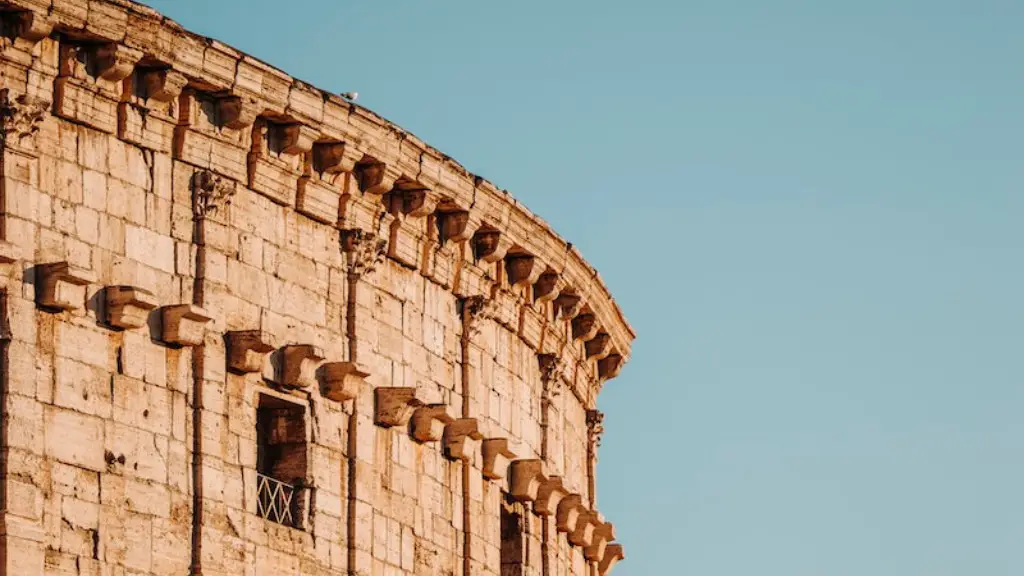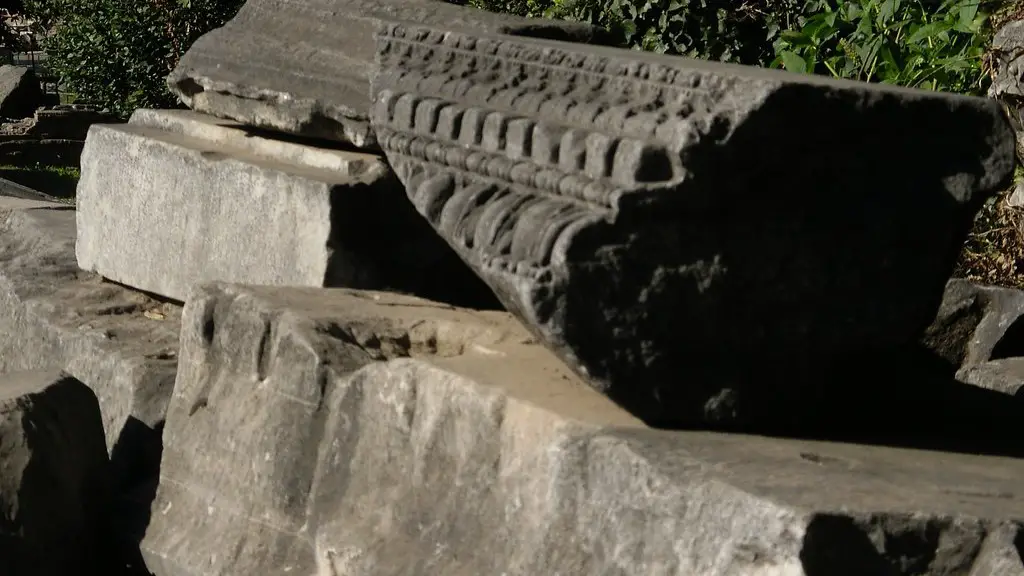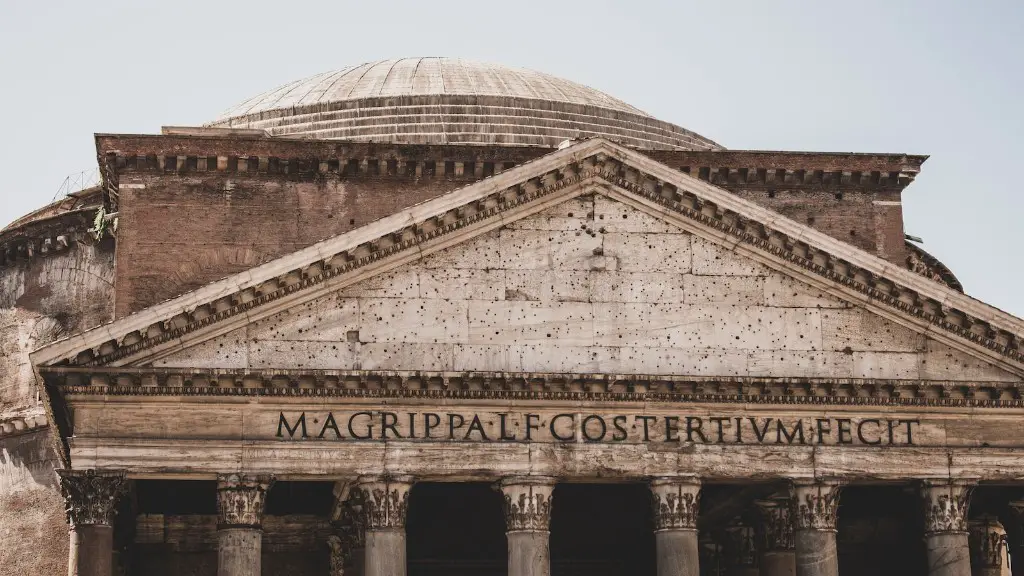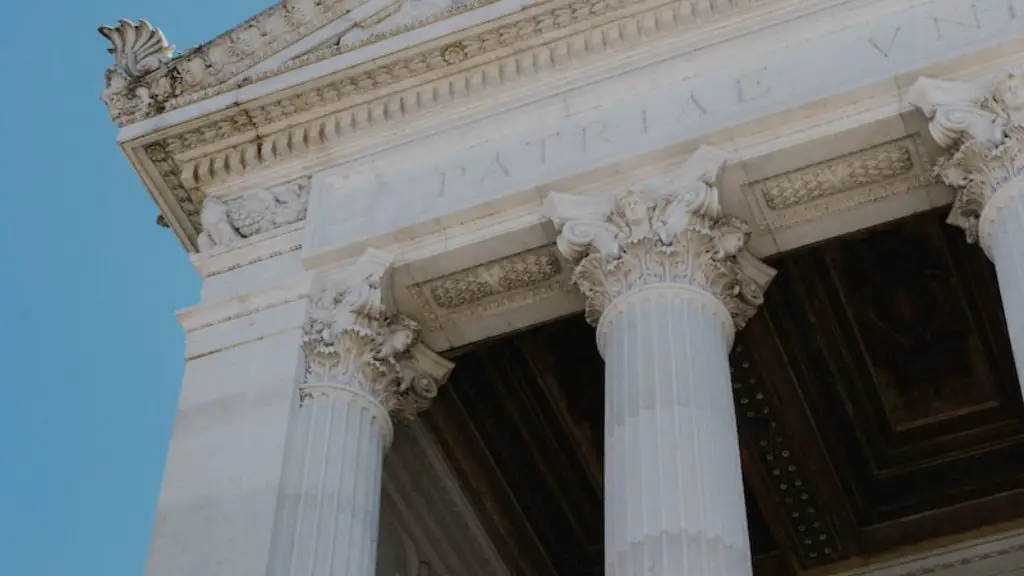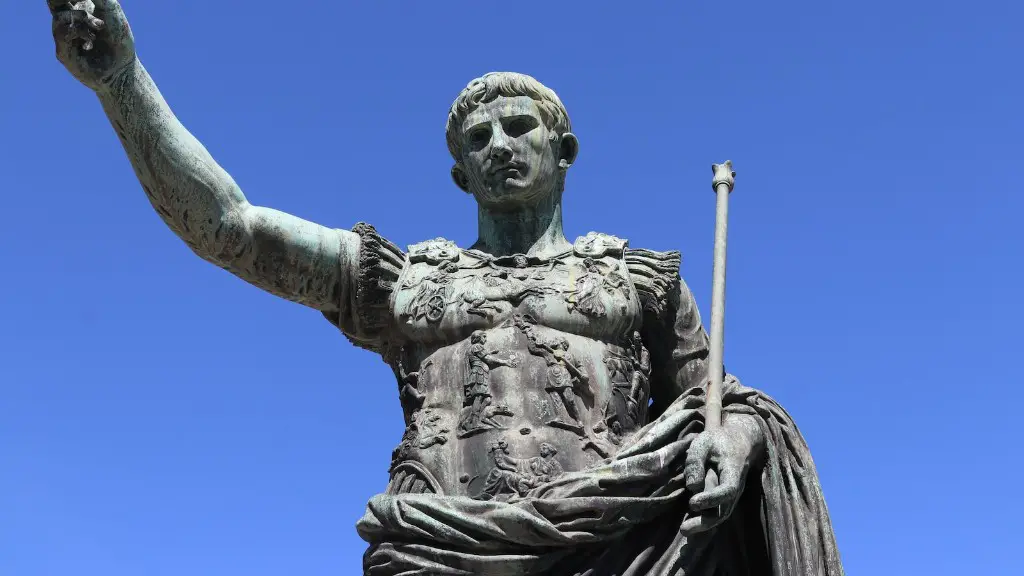The concept of the Roman Republic began in 509 BC, the year when the last king of Rome was overthrown by the most important men in the city. From then on, the Romans began to rule through a system of elected officials, in what is known as the Roman Republic. This was a new kind of government for the ancient world, as previous societies had been ruled by kings and tyrants. The Romans believed that a wise ruler should be chosen by the people, not born into the position. Thus, their government was based on the will of the people, and their government lasted until the end of the Roman Empire in the 5th century AD.
The Roman Republic was a representative democracy, with the citizens of Rome voting to elect representatives, known as Senators, to represent them in government. These Senators would then create laws and pass them to be followed by all. The types of laws they passed and the frequency of elections were determined by the type of government they had in place. For example, a consul could act as the ultimate law-maker and could bring his own set of laws for the Roman people. For the most part, however, the Senate voted on laws that the citizens wanted.
Although the early Roman Republic was far from perfect, it was highly successful. Our modern system of government, with its checks and balances, owes a great deal to the Roman Republic. In particular, the separation of power between the Senate and the executive branch, as well as the very idea of representation itself, first appeared in Rome. This meant that the most powerful people in the city weren’t just kings, but rather ordinary citizens who were chosen through elections. This allowed the people of Rome to shape their own destiny and create laws that were in their own interests.
By the end of the Republic, Rome was plagued by a number of problems, including internal strife, frequent civil wars, and becoming increasingly subject to military dictatorships. Eventually, in 27 BC, the Roman Empire was formed, which saw the establishment of an emperor, who was both ruler and law-maker. This new form of government, known as the Roman Empire, is what motivates many of us today.
Although the Roman Empire maintained much of the same institutions and structure of the Republic, it was far from a democratic form of government. The emperor was a dictator and held absolute power, unchallenged by any kind of opposition. This left the citizens of the Roman Empire to focus on administrative matters and following the laws laid down by the emperor.
Roman Slavery
Slavery played a major role in the ancient Roman Republic and Empire. Slaves were used in many aspects of Roman life, from labor in mines and as domestic servants, to being forced to fight in gladiatorial games in organized arenas.
Although some slaves were able to rise in status and wealth, the majority of them were forced to live in abject poverty. Slaves were treated harshly, and often viewed as nothing more than property. It is often noted that the Roman Republic and Empire helped to fuel the idea of racial superiority, as those who were enslaved often came from racial backgrounds that were deemed inferior to that of the Romans.
Interestingly, the Roman Republic and Empire also saw the emergence of another form of slavery, one that was based on debt. People who found themselves in debt to the state, or to wealthy citizens, were required to work off this debt without pay. This form of slavery was quite pervasive in the Roman world and is still an issue in parts of the world today.
Roman Religion
Religion played an important role in the lives of the Roman citizens, and the Roman Republic and Empire were heavily influenced by religious beliefs. The Romans believed in a variety of gods and goddesses, whose power and influence could be harnessed through various rituals. Large temples were built to house these gods and goddesses, with various festivals and rituals held in their honor.
During the time of the Republic, the Senate was responsible for choosing the temple priests, who were usually from influential families. During the Empire, the Emperor also held a high degree of influence over religious matters. The Emperor could also make laws that were based on religious beliefs, and sometimes even enforced them with severe punishments.
Roman Education System
Education was highly esteemed in the Roman Republic and Empire. Education for the elite was very expensive and often required traveling to Rome for a proper education. Wealthy families sent their sons to Rome for their education, where they learned a variety of subjects ranging from philosophy to politics and rhetoric.
For the non-elite, education was seen as a way of improving oneself and one’s prospects. Schools were set up to teach basic literacy and numeracy, which provided the lower classes with a way to gain access to greater opportunities. Education in the Roman Republic and Empire was far from equal, however, and access to a proper education was still largely limited to the wealthy.
Roman law
The Roman Republic and Empire is well known for introducing a new kind of law and for setting the foundations for our current legal system. Roman law drew on the traditions and practices of the earlier Roman Republic, making use of practicality and reason when crafting laws. This system was later refined during the Empire, and is now known as Roman civil law.
This system of law was based on three main principles: the Law of Twelve Tables, the Justinian Code and the Codex Theodosianus. These three principles, which all had their own individual codes of law, combined to form the basis for the modern legal systems of many countries. Roman law was based on principles of fairness, justice and practicality, and it also recognised the need to protect the rights of individuals.
Roman Art and Architecture
The Roman Republic and Empire are well known for having produced some of the most magnificent and beautiful works of art and architecture in the history of the world.
The Romans were keen to express their power, wealth and strength through impressive constructions, such as the Colosseum and the aqueducts. These were often awe-inspiring works that demonstrated the Roman’s technological and engineering prowess. Roman art was often joyful, triumphant and highly detailed and featured sculptures, frescoes and mosaics. Roman architecture and art continue to influence the world even today.
